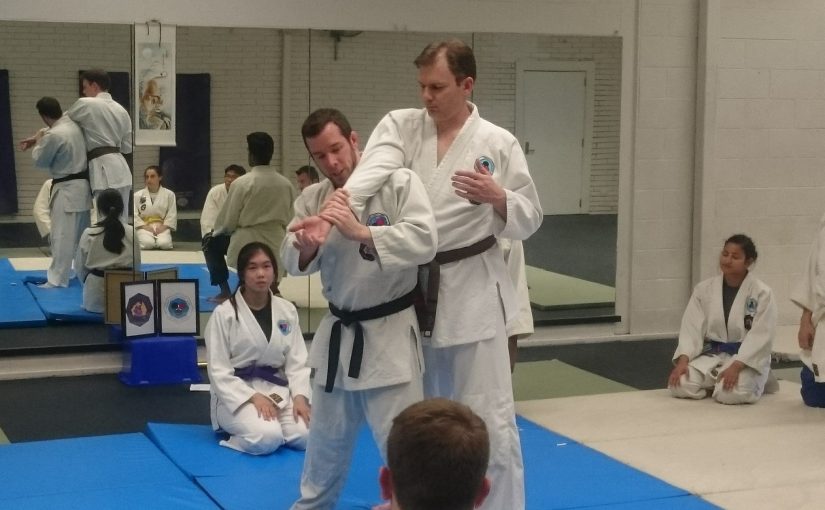What is Jiu-jitsu?
Jiu-jitsu was the unarmed fighting art of the Japanese Samurai — the Bushi or warrior class. If a Samurai lost or broke his sword in battle, he resorted to the striking and grappling techniques of Jiu-jitsu to defeat his enemy.
The term Jiu-jitsu literally means ‘gentle art’. Jiu-jitsu emphasizes the efficient use of one’s body. Good technique rather than strength is used to make effective self defence.
There are many different schools, styles, or ryu, in Jiu-jitsu. Each ryu has its own specialty. The particular style that is studied in the Monash University Jiu-jitsu Club is called Tai-jitsu Ryu. According to oral tradition, Tai-jitsu Ryu was codified by a group of Chinese Buddhist nuns living in Japan in the 16th Century. It is a very comprehensive style, encompassing many techniques. It includes punches, kicks, throws, strangles, joint locks, use of pressure points and ground-fighting. The emphasis is on the close range. This makes it an excellent martial art for developing self defence skills.
The best way to get an idea of what Jiu-jitsu is all about is to come along and watch or participate in a class.
Why learn it?
Jiu-jitsu is an excellent martial art for self defence and develops good all-round fitness. It is a vehicle for self improvement and it’s fun.
What are classes like?
A typical class begins with warm ups using various breakfalling exercises. This not only teaches proper falling techniques, but conditions the body to take an impact from a fall or strike. This is usually followed by practicing the basic throwing techniques and various hand arts including restraint and control techniques. Towards the end of the class groundwork is practiced to develop skill in groundfighting and body movement (tai sabaki) and to further condition the body. A cool-down phase involving rolling techniques and a traditional bowing ceremony finish the class.
While the basics (kihon) are practiced every week, more advanced techniques of self defence, aiki-ju-jitsu, judo-do and so on are also frequently taught.
Come along and see for yourself
What to wear?
No special uniform is needed initially; just wear loose fitting clothing (track pants and T-shirt) and you can borrow a jacket from us. Later you may like to buy a uniform (judogi).
